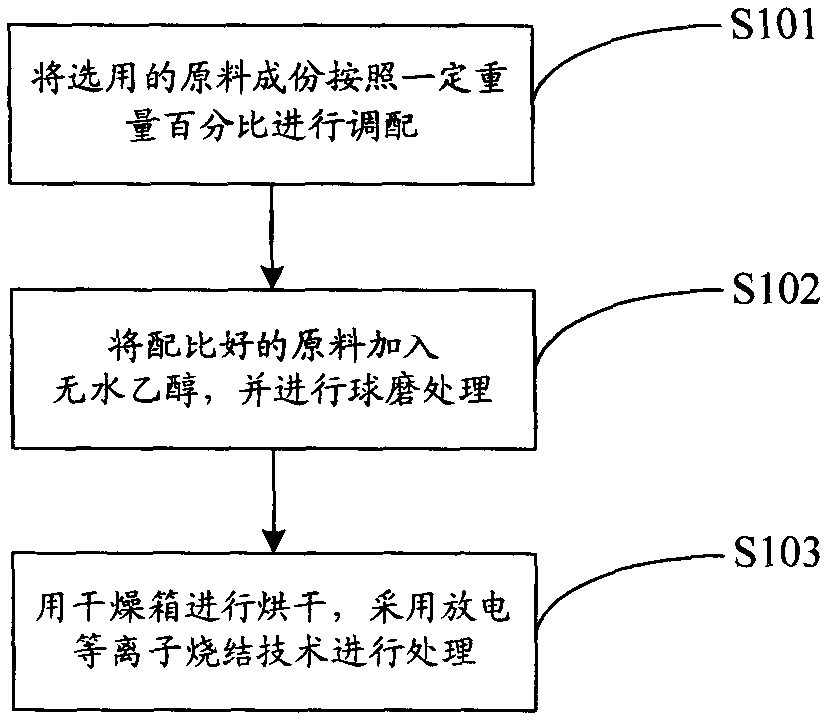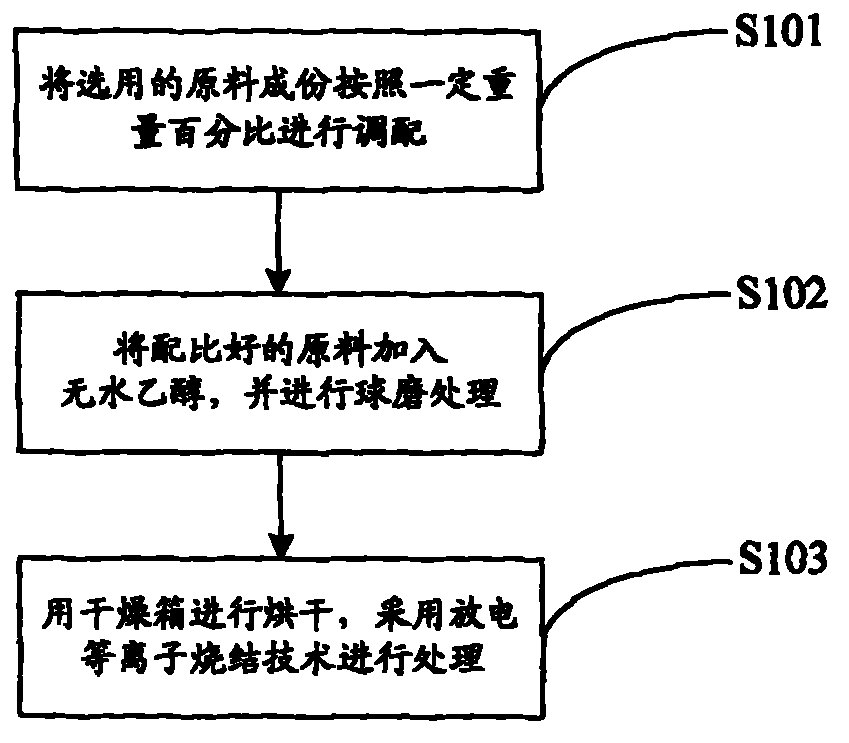Ceramic connection method by using high-temperature interlayer material
An intermediate layer, high temperature technology, applied in the field of ceramic connection using high temperature intermediate layer materials, can solve the problems of metal intermediate layer oxidation resistance, poor corrosion resistance, high residual stress, poor wettability, etc., to achieve good connection effect, connection The effect of high strength and stable performance at high temperature
- Summary
- Abstract
- Description
- Claims
- Application Information
AI Technical Summary
Problems solved by technology
Method used
Image
Examples
preparation example Construction
[0034] The preparation method includes the following steps:
[0035] In step S101, the selected raw material components are blended according to a certain weight percentage;
[0036] In step S102, the raw materials with a good ratio are added to anhydrous ethanol, and ball milling is performed;
[0037] In step S103, a drying oven is used for drying, and the spark plasma sintering technology is used for processing.
[0038] In the embodiment of the present invention, the high-temperature intermediate layer material is Ti 3 SiC 2 The system, the selected raw material composition and weight percentage composition are: Ti: 68-78%, Si: 14-70%, C: 12-13%, TiC: 30-90%, SiC: 22-40%.
[0039] In the embodiment of the present invention, the selected combinations of raw material components and weight percentages are:
[0040] 1. Ti: 68-78%, Si: 14-20%, C: 12-13%;
[0041] 2. TiC: 30-90%, Si: 14-70%;
[0042] 3. Ti: 68-78%, SiC: 22-40%.
[0043] In the embodiment of the present invention, the time for...
PUM
| Property | Measurement | Unit |
|---|---|---|
| bending strength | aaaaa | aaaaa |
| shear strength | aaaaa | aaaaa |
| shear strength | aaaaa | aaaaa |
Abstract
Description
Claims
Application Information
 Login to View More
Login to View More - R&D
- Intellectual Property
- Life Sciences
- Materials
- Tech Scout
- Unparalleled Data Quality
- Higher Quality Content
- 60% Fewer Hallucinations
Browse by: Latest US Patents, China's latest patents, Technical Efficacy Thesaurus, Application Domain, Technology Topic, Popular Technical Reports.
© 2025 PatSnap. All rights reserved.Legal|Privacy policy|Modern Slavery Act Transparency Statement|Sitemap|About US| Contact US: help@patsnap.com



